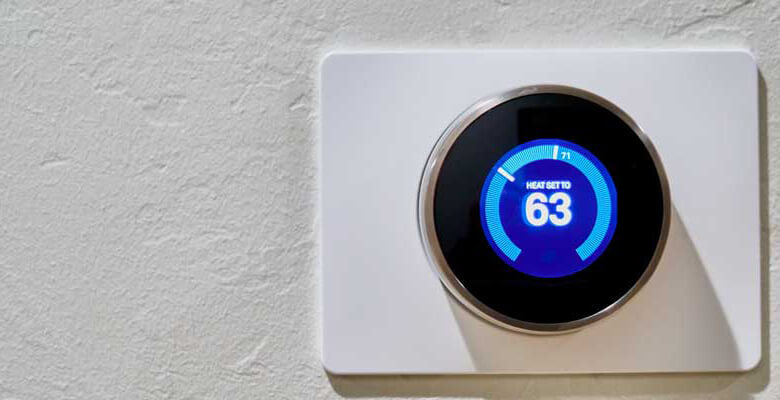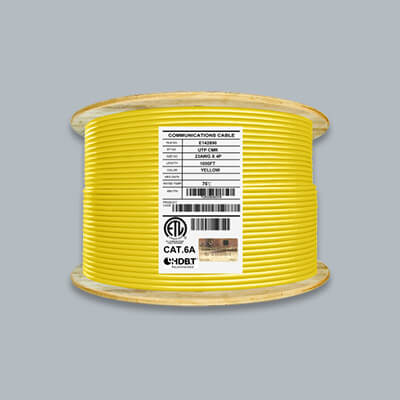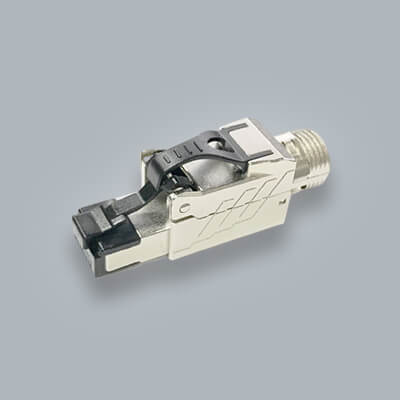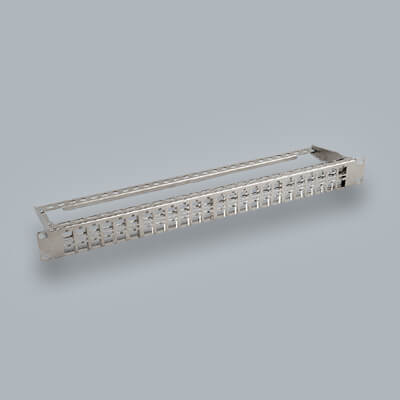How Temperature Affects Your Ethernet Cable

There are many circumstances that have the ability to affect your ethernet cables performance. I know...we say that a lot. If you're trying to figure this all out for the first time you're probably saying great another thing to worry about. The thing about ethernet cables today is that they are becoming so advanced and with the increase in categories has given them the ability to perform better against almost any scenario than they would have lets say about 20 years ago. Taking on weather, tight bends or long distances there's a cable for you. Getting everything right and accounting for your environment is one aspect that should really be taking in to consideration when deciding what cable to use. Ethernet cables have the ability to perform in almost every temperature but knowing how temperature affects your ethernet cable will help you decide which cable to use.
Cable and Temperature Overview
Ethernet cables specifically balanced twisted pair cables used in various applications are created to operate in various environments. They have special insulation materials and jacket materials that help them achieve performance in conditions such as lower and hotter temperatures. In this blog specifically we will focus on warmer temperatures. You can expect temperature to fluctuate throughout the year and depending on where your are located the temperatures can rise drastically. But other than your geographical location you can expect to find higher temperatures in:
- The exterior of building walls
- Inside ceiling spaces which includes plenums
- Mechanical rooms
- Attics in your home
All these areas present the opportunity for temperature to get to your cable and have some affect. The amount of affect temperature can have on your cable will vary but the most important thing we want to worry about is attenuation. Here's some helpful information on what is attenuation.
It's typically noted that anything above 20 ° C or 68°F will start to increase attenuation on your cable.
There has even been occurrences when networking installations have failed because of too much of an increase in rising temperatures. Some of those have happened from solar heating hitting the exterior of a building and the cable as well. Something you just don't want to happen. Although this is rare you can never be so careful. So what can be done to prevent attenuation at higher temperatures?
Some of the things that can be done to prevent attenuation at higher temperatures is to plan accordingly. If you're installing cable in the winter don't forget to consider summer conditions. The best practices for networking installation is to plan for the highest temperature possible. This helps in choosing the right type of cable.
Why Does Attenuation Increase at Higher Temperatures?
The reason attenuation increases at higher temperatures is because of three main electrical characteristics. The first is conductor resistance. Conductor resistance is the opposition to the flow of electrical current through a conductor. The second is insulation dielectric constant. Which is the ration of the capacitance of an insulate conductor to the capacitance of the same conductor uninsulated in the air. You want lower numbers when it comes to IDC. The third is the dissipation factor. Dissipation factor is the loss in insulation due to molecular excitement, kinetic and thermal energy loss. You also want a lower dissipation factor number. Here some more information on electrical characteristics of insulation materials.
All these when increased is why attenuation occurs at higher temperatures. Depending on the material of the cable its affect will vary.
How Much Does Temperature Affect Ethernet Cable?
The actual percentage of attenuation increase will vary but to get a good understanding you can estimate that it will increase in ethernet cable 0.2% per degree Fahrenheit above 68° F for screened cables. It will fluctuate up to 0.4% per degree for all frequencies and and temps up to 104° F and finally 0.6% per degree Fahrenheit for all frequencies and and temps from 104 to 140° F.
We touched on it a little bit earlier but what can be done to mitigate attenuation at higher temperatures?
The best thing you can do is use certain insulation materials at higher temperatures. If you know that temperatures can possibly rise to greater temperatures such as the ones we mentioned in the paragraph above it's best to use a cable with better performing insulation materials against higher temperatures.
Some of the common insulation materials used in ethernet cables are FEP, ECTFE, PVC and PE.
Out of all these FEP is the best insulation against high temps.
FEP insulated ethernet cable has been tested and shown to have the least amount of attenuation at higher temperatures. So in areas such as plenums and mechanical rooms where temperatures can get very hot it's required to use Plenum rated cables. Not only do they perform better than PVC or PE at higher temps they will reduce the spread of flames and emit less toxic smoke.
Which Cable Is Right For Me?
For the average person it will be difficult to see the difference of performance in higher temperatures. We are talking about crosstalk percentages less than 1 % in some cases so it's impossible for many to calculate the actual benefits they will get compared to other types. Unless you're installing major developments or data centers then taking the time to run the numbers might not be worth the time.
What we want to do is provide you with the necessary information to make the best choice for your situation. The best thing you can do to mitigate issues in the first place is use the right cable jacket material in the right place:
(CM) rated cable for general use
Riser for in the walls
Plenum for areas with air flow
These cable types when used in their places will give you the performance you are looking for in almost any situation. It's only when you want absolute maximum performance that you can look to plenum (FEP) cable for areas where you can expect temps to rise.
We hope you found this article on how temperature affects your ethernet cable helpful ! As always feel free to reach out to us with any questions you have.
Happy cabling!
Information provided by "Temperature-related changes in dielectric constant and dissipation factor of insulations increase attenuation in data cables used in building plenums" by C.Y.O Lin and J.P. Curilla.
More information on IEEE






To the infinity-cable-products.com administrator, You always provide useful tips and best practices.